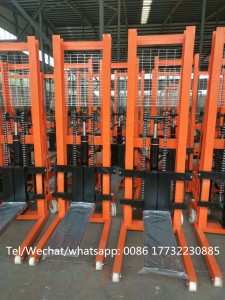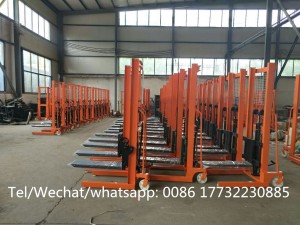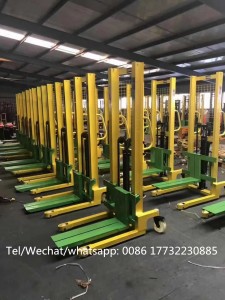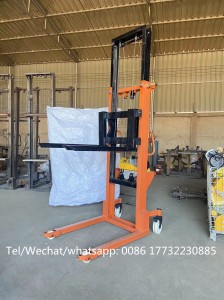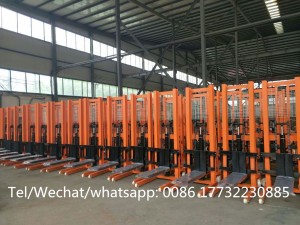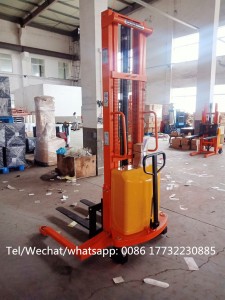When operating stacker forklifts, it’s essential to prioritize safety to prevent accidents and ensure the well-being of operators and those working in the vicinity. Here are some safety precautions to consider:
Operator Training: Ensure that operators receive proper training on stacker forklift operation, including safe operating procedures, load capacity limitations, and maneuvering techniques. Training should cover both theoretical knowledge and practical hands-on experience.
Pre-Operational Inspection: Before using a stacker forklift, conduct a thorough inspection to check for any damage, malfunction, or wear and tear. Inspect the brakes, tires, hydraulic systems, safety features, and ensure that all components are in good working condition.
Load Capacity: Adhere to the specified load capacity of the stacker forklift. Do not exceed the maximum lifting capacity, as it can compromise stability and lead to accidents. Consider the load weight, size, and distribution when stacking to maintain balance.
Load Placement and Stability: Ensure that the load is properly centered and stable on the forks or platform. Use appropriate attachments or securing methods to prevent load shifting or falling during transportation.
Operating Environment: Be aware of the operating environment and potential hazards. Ensure that the work area is clear of obstacles, debris, or slippery surfaces that can cause accidents. Pay attention to overhead obstructions, such as low ceilings or hanging objects.
Pedestrian Safety: Maintain a safe distance from pedestrians and other equipment in the vicinity. Use horns or audible signals when approaching blind corners or intersections to alert others. Encourage clear communication and establish designated walkways to separate pedestrians from forklift traffic.
Proper Use of Controls: Familiarize yourself with the stacker forklift’s controls and use them correctly. Follow proper procedures for raising, lowering, and tilting the load. Avoid abrupt movements or sudden changes in direction that can destabilize the stacker or cause the load to shift.
Seatbelt Usage: If the stacker forklift is equipped with a seatbelt, ensure that it is worn by the operator at all times. Seatbelts help prevent ejection in the event of a collision or tip-over.
Maintenance and Inspections: Regularly maintain the stacker forklift according to the manufacturer’s guidelines. Conduct routine inspections, including checking fluid levels, brakes, tires, and other critical components. Address any issues promptly to avoid operating with faulty equipment.
Emergency Preparedness: Be familiar with emergency procedures and the location of fire extinguishers, emergency exits, and first aid kits. In the event of an accident or emergency, follow proper protocols and report incidents to the appropriate personnel.
Remember, these safety precautions are general guidelines, and it’s crucial to consult the specific safety guidelines and recommendations provided by the stacker forklift manufacturer.
Post time: Oct-18-2023





